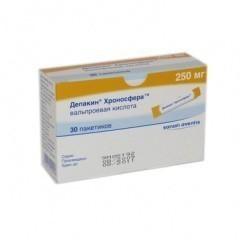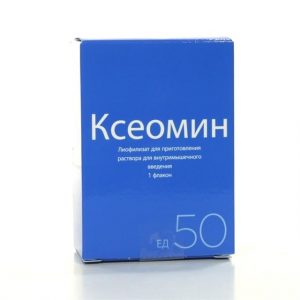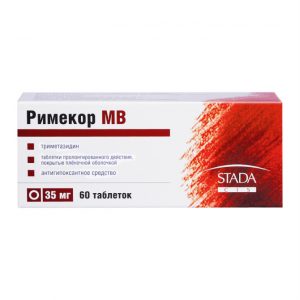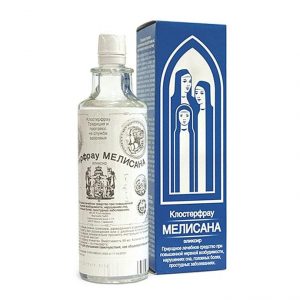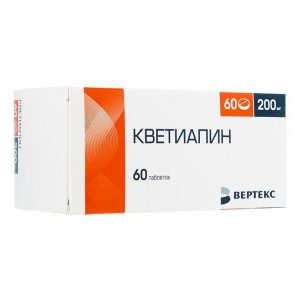Description
Latin name
Depakine chronosphere
Release form
Sustained-release granules of almost white or slightly yellowish color, waxy, easily flowing, without the formation of agglomerates.
Packaging
Three-layer sachets (30) – packs of cardboard.
Pharmacological action
Antiepileptic drug, has a central muscle relaxant and sedative effect.
It exhibits antiepileptic activity in various types of epilepsy. The main mechanism of action, apparently, is associated with the action of valproic acid on the GABA-ergic system: it increases the GABA content in the central nervous system and activates GABA-ergic transmission.
Depakin® Chronosphere ™ is a granule of prolonged action, providing more uniform drug concentrations throughout the day.
Pharmacokinetics
Absorption
The oral bioavailability of valproic acid is close to 100%. Eating does not affect the pharmacokinetic profile. Cmax of the drug in plasma is reached approximately 7 hours after ingestion.
Compared to the enteric-coated dosage form, the equivalent doses of Depakin® Chronosphere ™ are characterized by longer absorption, identical bioavailability, more linear correlation between doses and plasma concentration of valproic acid (total concentration and concentration of the free fraction). In addition, Cmax and Cmax of the free valproic acid fraction in plasma are lower (a decrease of about 25%). but there is a relatively more stable phase of the plateau of plasma concentrations from 4 to 14 hours after administration, the amount of fluctuation in plasma concentrations when taking Depakin® Chronosphere ™ compared to the enteric-coated dosage form is halved, as a result of which valproic acid is more evenly distributed in tissues during the day.
With the course of taking the drug Css valproic acid in the blood serum is achieved within 3-14 days.
Serum valproic acid concentrations of 40-100 mg / L (300-700 μmol / L) are usually effective (determined before the first dose of the drug is taken during the day) With serum concentrations of valproic acid above 100 mg / L, side effects are expected to increase up to before the development of intoxication.
The distribution of
Vd depends on age and is usually 0.13-0.23 l / kg body weight, in young people 0.13-0.19 l / kg body weight. Due to the decrease in the magnitude of fluctuations in plasma concentrations when taking Depakin® Chronosphere ™, valproic acid is more evenly distributed in the tissues during the day compared to the immediate-release valproic acid dosage form.
The binding of valproic acid to plasma proteins (mainly to albumin) is high (90-95%), dose-dependent and saturable. Valproic acid penetrates into the cerebrospinal fluid and into the brain. The concentration of valproic acid in cerebrospinal fluid is 10% of the corresponding concentration in the blood serum, that is, it is close to the concentration of the free fraction of valproic acid in the blood serum.
Valproic acid passes into breast milk of nursing mothers. In a state of achieving serum valproic acid Css, its concentration in breast milk is up to 10% of its concentration in serum.
Metabolism
Valproic acid metabolism is carried out in the liver by glucuronidation, as well as beta, omega, and omega-1 oxidation. Over 20 metabolites have been identified, metabolites after omega-oxidation have a hepatotoxic effect.
Valproic acid does not have an inducing effect on enzymes included in the metabolic system of cytochrome P450: unlike most other antiepileptic drugs, valproic acid does not affect the degree of both its own metabolism and the degree of metabolism of other substances, such as estrogens, progestogens and indirect anticoagulants.
Excretion of
Valproic acid is predominantly excreted by the kidneys after conjugation with glucuronic acid and beta oxidation.
When using valproic acid in monotherapy, its T1 / 2 is 12-17 hours. When combined with antiepileptic drugs that induce microsomal liver enzymes (such as primidone, phenytoin, phenobarbital and carbamazepine), the plasma clearance of valproic acid increases, and T1 / 2 the degree of their change depends on the degree of induction of microsomal liver enzymes by other antiepileptic drugs. T1 / 2 in children older than 2 months is close to that in adults.
Pharmacokinetics in special clinical cases
In elderly patients, patients with renal and hepatic insufficiency, binding to plasma proteins is reduced.
In severe renal failure, the concentration of the free (therapeutically active) fraction of valproic acid may increase to 8.5-20%.
In case of hypoproteinemia, the total concentration of valproic acid (free + fraction bound to blood plasma proteins) may not change, but it may also decrease due to an increase in metabolism of the free (non-bound blood plasma fraction) valproic acid fraction.
In patients with liver disease, valproic acid T1 / 2 increases.
In case of overdose, an increase in T1 / 2 up to 30 hours was observed. Only the free fraction of valproic acid in the blood (510%) undergoes hemodialysis.
Pharmacokinetics during pregnancy
With an increase in Vd of valproic acid in the third trimester of pregnancy, its renal and hepatic clearance increase. Wherein, despite taking the drug in a constant dose, a decrease in serum concentrations of valproic acid is possible. In addition, during pregnancy, the relationship of valproic acid with plasma proteins can change, which can lead to an increase in the serum content of the free (therapeutically active) fraction of valproic acid.
Indications
In adults (as monotherapy or in combination with other antiepileptic drugs): for the treatment of generalized epileptic seizures: clonic, tonic, tonic-clonic, absences, myoclonic, atonic Lennox-Gastaut syndrome
epileptic for partial seizures with or without secondary generalization
treatment and prevention of bipolar affective disorders.
In infants (starting at 6 months of age) and children (as monotherapy or in combination with other antiepileptic drugs): for the treatment of generalized epileptic seizures: clonic, tonic, tonic-clonic, absences, myoclonic, atonic Lennox-Gastaut syndrome
for the treatment of partial epileptic seizures: partial seizures with or without secondary generalization
prophylaxis of seizures at high temperature, when such prophylaxis is necessary.
Contraindications
acute hepatitis
chronic hepatitis
severe liver disease (especially drug hepatitis) in the history of the patient and his close blood relatives
severe liver damage with fatal outcome in the use of valproic acid in patients with close blood or liver function glands
hepatic porphyria
hemorrhagic diathesis, thrombocytopenia
combination with mefloquine
combinations with St. John’s wort perforated
children under 6 months of age
hypersensitivity to sodium valproate, valproic acid, semisodium valproate, valpromide, or to any of the components of the drug.
With caution
for liver and pancreas diseases in the anamnesis of
during pregnancy
for congenital fermentopathies
with inhibition of bone marrow hematopoiesis (leukopenia, thrombocytopenia, anemia) drugs because of the increased risk of liver damage
while taking drugs that provoke convulsive seizures or lower the threshold of convulsive readiness, so them as tricyclic antidepressants, selective serotonin reuptake inhibitors, phenothiazine derivatives, butyrophenone derivatives, chloroquine, bupropion, tramadol (risk of convulsive seizures)
while taking antipsychotics, MAO inhibitors, antidepressants, benzodiazepines (the possibility of potentiating their effects)
while taking phenobarbital, primidine, phenytoin, lamotrigine, zidovudine, felbamate, acetylsalicylic acid, indirect anticoagulants, cimetidine, erythromycin, carbapenemine, communication with blood plasma proteins, a change in plasma concentrations of either these drugs and / or valproic acid)
is possible with the simultaneous use of carbamazepine (risk of potentiation of the toxic effects of carbamazepine and a decrease in the plasma concentration of valproic acid)
with the simultaneous use of topiramate (risk of developing encephalopathy).
Use in case of impaired liver function
The drug is contraindicated in acute hepatitis, chronic hepatitis, in cases of severe hepatitis in the patient or in his family history, especially caused by drugs, with severe violations of the liver.
Use in cases of impaired renal function
Use the drug with caution in case of renal failure.
Use in children
Average daily dose for children, incl. breast (starting from 6 months of life) – 30 mg / kg.
Composition
1 pack.
sodium valproate 166.76 mg
valproic acid 72.61 mg
? in terms of sodium valproate 250 mg
Excipients: solid paraffin – 253.32 mg, glycerol dibehenate – 265.3 mg, colloidal silicon dioxide.
* is added by spraying after the melt is cooled and expressed as a percentage of the amount of four other components: 0.7% (approximate amount absorbed on the granules: 0.56%).
Dosage and Administration
Depakin® Chronosphere ™ is a dosage form that is particularly suitable for treating children (if they are able to swallow soft foods) or adults with difficulty swallowing.
Depakin® Chronosphere ™ is a granule of prolonged action, providing a more uniform concentration of valproic acid in the blood and, accordingly, more uniform throughout the day its distribution in the tissues.
Bipolar Affective Disorders
Dose should be selected and monitored by the attending physician individually. The daily dose should be established taking into account the age and body weight of the patient. The recommended starting dose is 20 mg (in terms of sodium valproate) per kg of body weight. The dose should be as quickly as possible increased to the minimum dose providing the desired therapeutic effect.
The recommended maintenance dose for the treatment of bipolar disorders is between 1000 mg and 2000 mg (in terms of sodium valproate) per day. The dose should be selected in accordance with the individual clinical response of the patient. For prophylaxis of manic conditions, an individually selected minimum clinically effective dose should be used.
Epilepsy
In monotherapy, the initial daily dose is usually 5-10 mg (in terms of sodium valproate) per kg of body weight, then it is increased by 5 mg / kg every 4-7 until the optimal dose can be avoided to prevent the occurrence of epilepsy attacks.
Average daily dose: for children (up to 14 years old) – 30 mg / kg body weight
for adolescents 14-18 years old – 25 mg / kg body weight
for adults and elderly patients (body weight from 60 kg and above) – 20 mg / kg body weight.
Therefore, the daily doses below are recommended.
Patient age Body weight Average daily dose *
Infants 6 to 12 months old About 7.5-10 kg 150-300 mg
Children 1 to 3 years old About 10-15 kg 300-450 mg
Children 3 to 6 years old About 15-25 kg 450- 750 mg
Children from 7 to 14 years old About 25-40 kg 750-1200 mg
Adolescents from 14 years old About 40-60 kg 1000-1500 mg
Adults From 60 kg and above 1200-2100 mg
* dose based on the number of milligrams of sodium valproate
Average daily the dose may be increased under the control of the concentration of valproic acid in the blood.
In some cases, the full therapeutic effect of valproic acid does not appear immediately, but develops within 4-6 weeks. Therefore, you should not increase the daily dose above the recommended average daily dose earlier than this period.
Although the daily dose is determined according to the age and body weight of the patient, a wide range of individual sensitivity to valproic acid should be taken into account.
A clear correlation between the daily dose, the concentration of valproic acid in the blood serum and the therapeutic effect has not been established. Therefore, the optimal dose should be selected mainly based on the clinical response.
Determination of the concentration of valproic acid in blood serum can complement clinical observation if epilepsy is not controlled or if side effects are suspected. Dosages that provide serum concentrations of valproic acid of 40-100 mg / L (300-700 μmol / L) are usually effective. If it is reasonably necessary to achieve higher concentrations in blood serum, the ratio of the expected benefit and the risk of side effects, especially dose-dependent, should be carefully weighed, because at serum concentrations of valproic acid above 100 mg / l, an increase in side effects is expected until the development of intoxication. Therefore, the serum concentration determined before taking the first dose per day should not exceed 100 mg / l.
When switching from Depakin® immediate release or delayed release dosage forms that have well controlled epilepsy to Depakin® Chronosphere ™, it is recommended that the same daily dose be maintained.
For patients who have previously taken antiepileptic drugs, the transfer to the administration of Depakin® Chronosphere ™ should be carried out gradually, reaching the optimal dose of the drug in about 2 weeks. In this case, the dose of the previously taken antiepileptic drug, especially phenobarbital, is immediately reduced. If a previously taken antiepileptic drug is canceled, then its cancellation should be carried out gradually.
If necessary, a combination of valproic acid with other antiepileptic drugs should be added gradually.
Since other antiepileptic drugs can reversibly induce liver microsomal enzymes, monitor the concentration of valproic acid in the blood for 4-6 weeks after taking the last dose of these antiepileptic drugs and, if necessary (as the metabolic inducing effect of these drugs decreases), reduce the daily dose of the drug Depakin® Chronosphere ™.
Although elderly patients have changes in the pharmacokinetics of valproic acid, they have limited clinical relevance and the dose of valproic acid in elderly patients should be adjusted to achieve control over epilepsy seizures.
In patients with renal failure and / or hypoproteinemia, the possibility of increasing the concentration of the free (therapeutically active) valproic acid fraction in the blood serum should be considered, and if necessary, reduce the dose of valproic acid, focusing on the clinical picture rather than on the dose selection the total content of valproic acid in the blood serum (the free fraction and the fraction associated with the blood plasma proteins) to avoid possible errors in the selection of the dose.
Dosing
The drug is taken orally.
Depakin® Chronosphere ™ 100 mg sachets are used only in children and infants.
Depakin® Chronosphere ™ 1000 mg sachets are used only in adults.
The daily dose is recommended to be taken in 1 or 2 doses, preferably during meals. Application in 1 dose is possible with well-controlled epilepsy.
Depakin® Chronosphere ™ should be placed on the surface of soft food or drink, cold or at room temperature (yogurt, orange juice, fruit puree, etc.).
Depakin® Chronosphere ™ should not be used with hot foods or drinks (such as soups, coffee, tea, etc.).
The drug Depakin® Chronosphere ™ cannot be poured into a bottle with a pacifier, as granules can clog a hole in the nipples.
If Depakine® Chronosphere ™ is taken with a liquid, it is recommended to rinse the glass with a little water and drink this water, as granules can stick to glass.
The mixture should always be swallowed immediately without chewing. It should not be stored for later use.
Given the length of the process of releasing the active substance and the nature of the excipients, the inert matrix of the granule is not absorbed from the digestive tract, but excreted in the feces after the complete release of the active substance.
Medicinal interactions
Neuroleptic drugs medical observation and, if necessary, dose adjustment.
Lithium preparations
Valproic acid does not affect serum lithium concentrations.
Phenobarbital
Valproic acid increases the plasma concentrations of phenobarbital (by reducing its hepatic metabolism), which makes it possible to develop a sedative effect of the latter, especially in children. Therefore, careful medical monitoring of the patient during the first 15 days of combination therapy with immediate reduction of the phenobarbital dose in the case of sedation and, if necessary, determination of the plasma concentrations of phenobarbital are recommended.
Primidone
Valproic acid increases the plasma concentrations of primidone with increasing side effects (such as sedation) with these treatments, these symptoms disappear with prolonged treatment. Careful clinical monitoring of the patient is recommended, especially at the beginning of combination therapy with primidone dose adjustment as needed.
Phenytoin
Valproic acid lowers total plasma concentrations of phenytoin. In addition, valproic acid increases the concentration of the free fraction of phenytoin with the possibility of developing symptoms of overdose (valproic acid displaces phenytoin from its association with blood plasma proteins and slows its hepatic catabolism). Therefore, close clinical monitoring of the patient and determination of phenytoin and its free fraction in the blood are recommended.
Carbamazepine
Clinical manifestations of carbamazepine toxicity have been reported with the use of valproic acid and carbamazepine, since valproic acid may potentiate the toxic effects of carbamazepine. Careful clinical monitoring of such patients is recommended, especially at the beginning of combination therapy with correction, if necessary, doses of carbamazepine.
Lamotrigine
Valproic acid slows the metabolism of lamotrigine in the liver and increases the half-life of lamotrigine by almost 2-fold. This interaction can lead to an increase in lamotrigine toxicity, in particular the development of severe skin reactions, including toxic epidermal necrolysis. Therefore, careful clinical monitoring and, if necessary, correction (reduction) of the dose of lamotrigine is recommended.
zidovudine
Valproic acid can increase plasma concentrations of zidovudine, leading to an increase in zidovudine toxicity.
Felbamate
Valproic acid can reduce the average clearance of felbamate by 16%.
Nimodipine (for ingestion and, by extrapolation, solution for parenteral administration)
Enhanced antihypertensive effect of nimodipine due to an increase in its plasma concentration (inhibition of nimodipine metabolism by valproic acid).
Effects of other drugs on valproic acid
Anti-epileptic drugs capable of inducing microsomal liver enzymes (including phenytoin, phenobarbital, carbamazepine) reduce plasma concentrations of valproic acid. In the case of combination therapy, the doses of valproic acid should be adjusted depending on the clinical response and the concentration of valproic acid in the blood.
Felbamate
With the combination of felbamate and valproic acid, the clearance of valproic acid is reduced by 22-50% and, accordingly, the plasma concentrations of valproic acid are increased. Plasma concentrations of valproic acid should be monitored.
Mefloquine
Mefloquine speeds up the metabolism of valproic acid and is capable of causing seizures, so the development of epileptic seizure may be possible with their simultaneous use.
Hypericum perforated drugs
With the simultaneous use of valproic acid and Hypericum perforated preparations, the anticonvulsant efficacy of valproic acid may be reduced.
Drugs that have strong binding to blood plasma proteins (acetylsalicylic acid)
In the case of the simultaneous use of valproic acid and drugs that have strong binding to blood plasma proteins (acetylsalicylic acid), increased concentration of free flu is possible.
Indirect anticoagulants
Concurrent monitoring of the prothrombin index is required when valproic acid and indirect anticoagulants are used concomitantly.
Cimetidine, erythromycin
Serum valproic acid concentrations may increase when cimetidine or erythromycin is used concomitantly (as a result of its hepatic metabolism).
Carbapenems (panipenem, meropenem, imipenem)
Reduction of concentrations of valproic acid in the blood with its simultaneous use with carbapenems, resulting in a 60-100% decrease in the concentration of valproic acid in the blood over the two days of joint therapy. Concomitant use of carbapenems in patients with a selected dose of valproic acid should be avoided due to their ability to rapidly and intensively reduce valproic acid concentrations in the blood. If carbapenem treatment cannot be avoided, careful monitoring of valproic acid concentrations in the blood should be performed.
rifampicin
rifampicin may reduce the concentration of valproic acid in the blood, resulting in the loss of therapeutic action of valproic acid. Therefore, it may be necessary to increase the dose with rifampicin.
Other interactions
Topiramate
Concomitant administration of valproic acid and topiramate has been associated with encephalopathy and / or hyperammonia. Patients, receiving these two drugs should be under close medical supervision for the development of symptoms of hyperammoniemic encephalopathy.
Estrogen-Progestogenic Drugs
Valproic acid does not have the ability to induce liver enzymes and as a result, valproic acid does not reduce the effectiveness of estrogen-progestogenic drugs in women using hormonal contraception.
Ethanol and other potentially hepatotoxic drugs
When used in combination with valproic acid, the hepatotoxic effect of valproic acid may be enhanced.
Clonazepam
Concomitant use of clonazepam with valproic acid may lead to increased severity of absent status in isolated cases.
Myelotoxic drugs
When used with valproic acid, the risk of bone marrow hematopoiesis is increased.
overdose
Symptoms: clinical manifestations of acute massive overdose usually occur as a coma with muscle hypotension, hyporeflexia, miosis, respiratory depression, metabolic acidosis. Cases of intracranial hypertension associated with cerebral edema have been described. With a massive overdose, a lethal outcome is possible, but usually the prognosis for an overdose is favorable.
Symptoms of overdose may vary, convulsive seizures have been reported at very high plasma concentrations of valproic acid.
Treatment: Urgent care for an overdose in the hospital should be as follows – gastric lavage, which is effective for 10-12 hours after taking the drug, monitoring the condition of the cardiovascular and respiratory system and maintaining effective diuresis. In some cases, naloxone was successfully used. In very severe cases of massive overdose, hemodialysis and hemoperfusion were effective.
Expiration
2 years.
Deystvuyuschee substances
Valproevaya acid
pharmacy package conditions p17ff45 pharmacy dpff45 pharmacy dpff45 from
pharmacies Prescription
dosage form
dosage form
granules
Sanofi-Aventis, France
